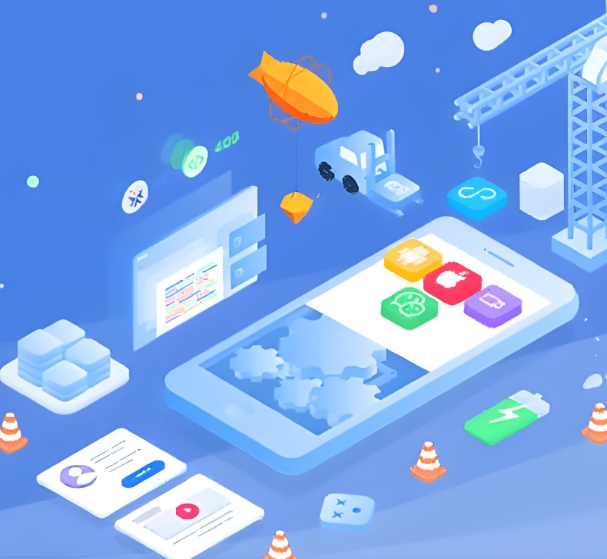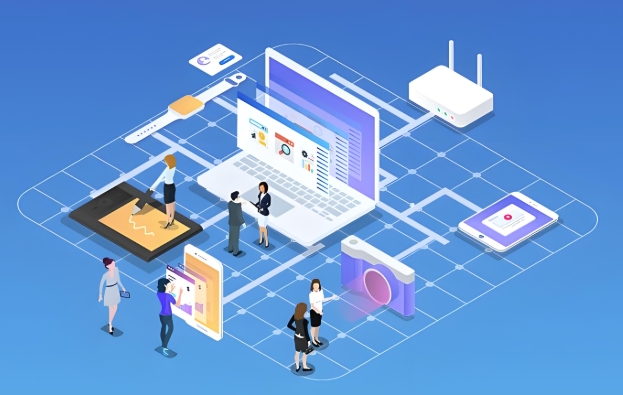How to Conduct Preliminary Requirements Analysis and Planning for APP Development
- latest articles
- 1.DApp Development & Customization: Merging Diverse Market Needs with User Experience 2.Analysis of the Core Technical System in DApp Project Development 3.How to achieve cross-chain interoperability in Web3 projects? 4.How does the tokenization of points reconstruct the e-commerce ecosystem? 5.How to Set and Track Data Metrics for a Points Mall? 6.What is DApp Development? Core Concepts and Technical Analysis 7.Inventory of commonly used Web3 development tools and usage tips 8.Development of a Distribution System Integrated with Social E-commerce 9.Six Key Steps for Businesses to Build a Points Mall System 10.What is DApp Development? A Comprehensive Guide from Concept to Implementation
- Popular Articles
- 1.Future Trends and Technology Predictions for APP Development in 2025 2.Analysis of the DeFi Ecosystem: How Developers Can Participate in Decentralized Finance Innovation 3.From Zero to One: How PI Mall Revolutionizes the Traditional E-commerce Model 4.DAPP Development | Best Practices for Professional Customization and Rapid Launch 5.Recommended by the Web3 developer community: the most noteworthy forums and resources 6.From Cloud Computing to Computing Power Leasing: Building a Flexible and Scalable Computing Resource Platform 7.How to Develop a Successful Douyin Mini Program: Technical Architecture and Best Practices 8.Shared Bike System APP: The Convenient Choice in the Era of Smart Travel 9.How to Create a Successful Dating App: From Needs Analysis to User Experience Design 10.From Design to Development: The Complete Process of Bringing an APP Idea to Life
With the rapid popularization of smartphones and mobile internet, apps (applications) have become an indispensable part of our daily lives. Whether for personal use, commercial services, or business management, apps are playing an increasingly important role. However, successful app development relies not only on technology and design but, more crucially, on the preliminary requirements analysis and planning. Only by fully understanding user needs, clearly defining product features, and properly allocating resources and time can the development process proceed smoothly, ultimately resulting in a high-quality app that meets market demands.
This article will delve into how to conduct preliminary requirements analysis and planning for app development, detailing each step and method from requirements gathering and organization to feature planning, and then to project management and risk assessment, helping developers prepare thoroughly before the project begins.
I. The Significance and Purpose of Requirements Analysis
Requirements analysis is the most critical step in app development, as it directly determines the direction and quality of the product during the development process. The main purposes of conducting requirements analysis are as follows:
Clarify Product Goals and Features
Requirements analysis helps developers clarify the core goals and features of the app, ensuring that every step in the development process moves towards the final product objectives.Avoid Blind Spots in the Development Process
Without clear requirements, the development team can easily lose direction during the process, potentially leading to redundant feature development, project delays, or even a final product that fails to meet users' actual needs.Reduce Development Risks and Costs
Through preliminary requirements analysis, potential issues and risks can be identified early, avoiding excessive modifications and rework in later stages, thereby saving development costs.Enhance User Experience
Requirements analysis enables the development team to approach from the user's perspective, understanding their pain points and needs, thus designing an app that better aligns with user habits and expectations, improving the user experience.
II. Steps and Methods for Preliminary Requirements Analysis
When conducting requirements analysis, you can proceed step by step as follows:
1. Understand Target Users and Market Needs
Before starting requirements analysis, it is essential to first identify the app's target user group and market needs. This process typically includes the following aspects:
Market Research: By researching similar apps in the market, analyze their strengths and weaknesses, understand competitor product features, identify gaps or shortcomings in the market, and determine your app's unique competitive advantages.
User Research: Collect potential user needs through methods such as surveys, interviews, and focus group discussions to understand their usage habits, pain points, and desired features. Analyzing user feedback helps better define the product's core functions.
User Personas: Based on user research results, create detailed user personas describing the target users' basic information, interests, usage scenarios, etc., to help the development team better understand their needs.
2. Define Functional Requirements
Based on market research and user needs analysis, the next step is to clarify the app's core functions. Functional requirements can be defined through the following aspects:
Core Function Identification: Define the app's core functions, such as social features, e-commerce capabilities, payment functions, etc., and specify how these functions will be implemented in the app. For example, social features might include chat, sharing, and comment modules.
Priority Setting: Among functional requirements, some features are essential, while others are additional or optional. When defining functions, use the MoSCoW method (Must have, Should have, Could have, Won't have) to prioritize, ensuring the most important features are implemented first.
Detailed Function Description: For each function, provide a detailed description of its implementation and user interaction design. For example, in e-commerce functions, specify the design requirements for product display pages and the interface design for the payment process, down to each specific step.
3. Technical Requirements Analysis
Technical requirements analysis is a crucial part of requirements analysis. The development team needs to select appropriate technical frameworks and development platforms based on the app's functional requirements to ensure technical feasibility and meet performance standards. Technical requirements analysis typically includes:
Platform Selection: Choose suitable development platforms (iOS, Android, cross-platform, etc.) based on the target users' devices and systems, and determine development tools and languages (e.g., Swift, Kotlin, Flutter).
System Architecture Design: Define the app's system architecture, including front-end and back-end interaction methods, data storage approaches, security design, etc., to ensure efficient and stable system operation.
Performance Requirements: Set performance standards for the app, such as response time, concurrent processing capability, data storage capacity, etc., to ensure a smooth user experience.
4. User Experience (UX) and Interface Design Requirements
During the requirements analysis phase, user experience and interface design are also important components. A good user experience can significantly increase app usage frequency and user retention. Therefore, consider the following aspects in requirements analysis:
User Interaction Design: Define the app's interaction methods and workflows to ensure each operation aligns with user habits, avoiding complexity or lack of intuitiveness.
Interface Design Requirements: Based on functional needs, determine the app's visual style and layout, including color schemes, font sizes, button designs, etc., ensuring the interface is clean, aesthetically pleasing, and consistent with the brand positioning.
Accessibility Design: Consider the needs of diverse user groups, ensuring the interface design adapts to various devices, languages, and cultures to meet different user requirements.
5. Project Management and Resource Planning
Requirements analysis is not just about defining functions and technology; it also involves project management and resource planning. At this stage, the development team needs to prepare the following:
Project Timeline: Based on the complexity of requirements, create a detailed development schedule, specifying tasks and delivery dates for each phase to ensure timely project completion.
Resource Allocation: Clarify roles and responsibilities within the development team, ensuring each module has a dedicated person. Also, identify necessary technical tools, development environments, and other resources to facilitate smooth development.
Budget Planning: Based on the complexity of requirements and resource needs, plan the project budget to ensure that progress or quality is not compromised by financial issues.
6. Risk Assessment and Mitigation Strategies
During the requirements analysis phase, it is also necessary to conduct risk assessments, identifying potential issues in advance and formulating corresponding mitigation strategies. These risks include:
Technical Risks: Issues such as immature technical solutions or insufficient technical personnel.
Market Risks: Changes in market demands or mismatches between user needs and developed features.
Resource Risks: Problems like staff turnover, insufficient resources, or budget overruns.
To address these risks, the development team can use risk management plans for control and prevention, ensuring a smooth development process.
III. Product Planning After Requirements Analysis
After completing requirements analysis, the next step is the product planning phase. The goal of this stage is to translate requirements into concrete product design and development blueprints, providing clear guidance for the development team.
Product Prototype Design: Create product prototype diagrams to display the layout and interaction flow of each functional module, helping the development and design teams understand the overall product structure.
Version Iteration Plan: Based on priority and development resources, create a version iteration plan, releasing features in stages to avoid overly complex development from launching too many features at once.
Testing Plan: Develop a detailed testing plan, including functional, performance, and security testing, to ensure the developed app meets all requirements.
IV. Summary
Preliminary requirements analysis and planning are the foundation of the entire app development process. Through thorough requirements analysis, the development team can clearly understand target users' needs, define the product's core functions, and select appropriate technical frameworks, ensuring an organized development workflow. Only by doing sufficient groundwork in the early stages can app development succeed, ultimately delivering a high-quality, user-friendly, and stable product to users.
-

How to Use App Development to Boost Conversion Rates on E-commerce Platforms
With the widespread adoption of smartphones and the rapid development of mobile ···
-

How APP Development Facilitates Digital Transformation and Innovation
With the rapid advancement of information technology, digital transformation has···
-

App Store Optimization and SEO Strategies in App Development
In today's rapidly evolving mobile internet landscape, apps have become essentia···

 Blockchain
Blockchain












